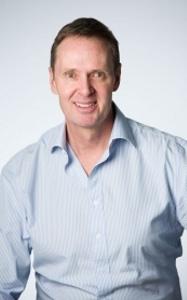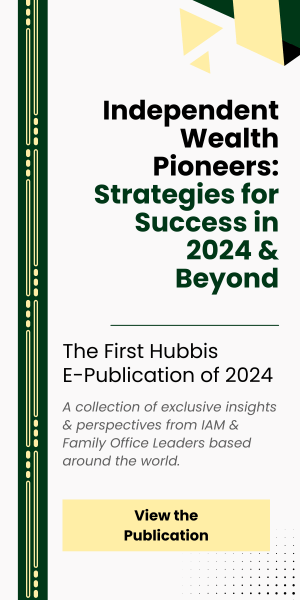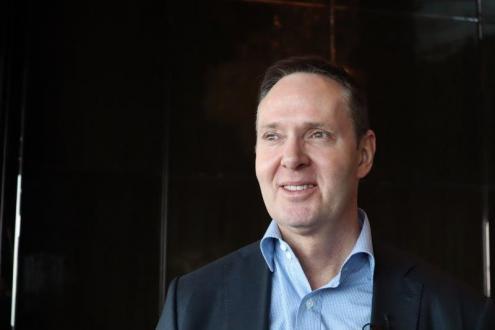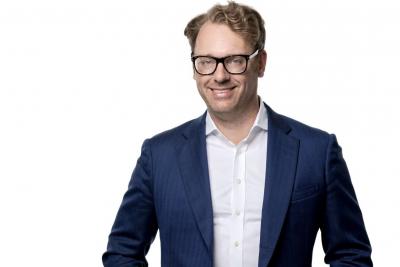Quantifeed: At the Cutting Edge of the Digitalisation and Democratisation of Wealth Management

Aug 4, 2020
For the past seven years, Hong Kong-based FinTech Quantifeed has been steadily building a client base of satisfied financial institutions. These include Singapore’s iconic digital transformation bank DBS, along with Taiwan’s Cathay United Bank and Hong Kong’s China CITIC Bank International. All Quantifeed clients have the common drive to enhance their digital offerings across their markets in Asia to cater to the estimated USD43 trillion of private wealth in the region. Under the broad banner of ‘Wealthcare’, Quantifeed provides digital wealth management platforms and full end-to-end solutions to fill certain gaps that a financial institution perceives are lacking. Leading FIs across Asia are racing to deploy digital wealth management capabilities and the firm’s quantitative and financial software engineering expertise, driven by its constantly-evolving QEngine platform, is already deployed in markets from Hong Kong to Taiwan to Singapore and soon to be in Thailand, and Japan. John Robson is Chief Commercial Officer and Head of Strategic Partnerships at Quantifeed. Hubbis ‘met’ with him via video call recently to discuss his view of the world of Asian wealth management, and how Quantifeed is continuously adapting its solutions to stay ahead of the market’s needs and expectations.
Quantifeed was founded as a Hong Kong-based company and today also has presence in Singapore, Australia and Japan. The company delivered its first platform in 2015, and perhaps its most famous coup to date has been to drive the already well-known DBS digital investment platform called ‘digiPortfolio’.”
“We are the established player out here in Asia,” says Robson, opening the discussion. “We have now delivered to many financial institutions, and we have built a deserved reputation for successful deployment. Our mission is simple, really, as it is to enable financial institutions to serve the wealth management needs of all customers.”
He explains that the firm’s belief is customers want an experience that is both effortless and convenient. “There are different financial firms trying to figure out how they can create that type of effortless, convenient wealth management that is truly personalised to customers’ needs and personas,” he elucidates, “using the data they have and external data. We are at the cutting edge of that game.”
Broadening the user experience
He remarks that the digital platforms in the market are now starting to offer much more to customers than just the ability to buy a set of financial instruments.
“People are inclined more to seek an experience of financial advice or financial management that is really effortless, where their savings and their investments are really becoming part of their whole lives and livelihoods,” he observes.
He cites a recent McKinsey report that predicts that by 2030 some 80% of new wealth management clients will want to be accessing wealth advice in a Netflix type model, driven around data and hyper-personalised to their needs, that is available continuously and is more of a subscription than transaction revenue model. “That is consistent with our vision since inception,” he comments, “and perfectly fits the way we have been building the platform. With our Wealthcare vision, we want to democratise financial advice, to make it affordable, available and convenient.”
He observes that since the pandemic hit, there has been an even more enthusiastic grasp of this concept. “We are certainly well-placed for the world ahead of us,” says Robson.
Seismic changes taking place
Robson has spoken regularly at Hubbis events (in the pre-pandemic universe) at which he emphasised how a seismic change has for some years been taking place in financial services, driven largely by customer expectations.
“Customers expect providers to deliver services to them,” he explains, “and put their needs right at the centre of the conversation. When this doesn’t happen, their attention wanders until they find the service provider that really does speak to them.” Banks and wealth firms must strive towards this type of quality, ease and service that we see in other spheres or ‘normal’ life. They also need to embrace the mass affluent, where dramatic growth in private wealth has been taking place for several decades in Asia, and which should continue for many years ahead.”
The message, therefore, he adds, is that digitally-enabled wealth management firms can cater optimally to the HNWIs and professional investors, but also all the way down to someone starting out his or her working career and setting out to invest for their future.
Driven by the powerful QEngine
Quantifeed’s solutions are driven by the ‘QEngine’ platform, which has been packaged into a suite of readily available applications. These applications are used by different user-groups in each financial institution, and contain core modules of Investment Products, Investment Advisory and Trade Management.
The QEngine Suite of applications services different users. They are fully integrated to help streamline workflows, reduce cost, and improve regulatory compliance in your business. QEngine Customer provides access to unique investment journeys catered to customers’ needs, goals and interests; QEngine Advisor puts tools in the hands of advisors to accelerate their business, QEngine Portfolio Manager enables the CIO to load and manage portfolios which are then available to the advisors and customers; while QEngine Administrator governs the access right and reporting requirements.
Why Quantifeed?
Robson then mines down further to the motivations of the FIs that take up the Quantifeed solutions.
“Banks and wealth firms are really looking to create an advice, or recommendation engine that efficiently delivers useful information to customers and achieves operational efficiency. It is not always about changing their models, but of unlocking new growth opportunities, so for example, if they have the advisor-led model, enabling advisor efficiency through better tools or possibly broadening their services to include a new self-directed offering.”
He reports that this shift is visible in Singapore, for example, where independent wealth management businesses that might be advisor-led are adding a self-directed robo-advisory service, thereby purchasing a technology platform that can generate the type of high-quality advice driven by enhanced data analytics, and tailored to the clients, while at the same time achieving operational efficiencies for the execution and management of those client portfolios.
DBS – an iconic customer
He cites DBS, a Quantifeed client, as having pioneered the shift towards discretionary portfolio management on their digital platform.
Robson explains that this is Asia’s first discretionary robo solution, and is based on in-house DBS discretionary management, combining human expertise with robo technology. He says that this is a great example of a bank that has imagined and created a remarkably successful digital robo-advisory platform.
He highlights how easy it is for the customer to interface with the DBS digiPortfolio. The customer answers just a few easy questions: “Your preferred currency of investment, your investment amount and your investment experience and appetite for risk,” Robson comments.
The digiPortfolio brings the proven DBS high-end discretionary portfolio management experience to anyone that has got upwards of just SGD1,000 to invest, and facilitates customers to buy portfolios of mutual funds or ETFs that are either in Singapore or US Dollars.
“It is an incredibly simple experience,” Robson adds, “as it delivers a truly engaging customer experience, it brings the ultra-HNW proposition to the retail market, in short, it is effortless wealth management in reality.”
Cathay United Bank’s goals-based platform
Robson also briefly highlights another approach, this time from Taiwan’s Cathay United Bank, in the form of a goals-based investing platform. “Cathay took that route, goals-based, while DBS has gone the risk-based route, but the two are closely connected with model investment portfolios mapped to the customers’ needs as the building blocks of both offerings,” he explains.
The goals-based platform gathers more inputs from the investor at the outset. These relate to the target amount of the financial goal which could be things such as retirement or a child’s education and the ability to save regularly into the wealth plan. Then, as with the DBS model it recommends a portfolio into which the customer will regularly invest with the aim of reaching the goal by the target date.
“Cathay’s solution is a very interesting tool for a financial institution to be able to offer their clients,” he remarks. “And it dovetails very nicely with having an advisor in the picture if they so want, although Cathay has started with a direct-to-customer offering.”
What it takes to win
Accordingly, Robson and colleagues believe that, as this inevitable move takes place, it is the platforms that offer the best digital and analytical engines for the creation of the best advice, delivered in a highly pleasant user experience, that will win out.
He adds that the pandemic has further reinforced willingness to have remote engagement, perhaps with an advisor by call or video call, perhaps via pure digital engagement. “I have an account with a private bank. It would be wonderful to see them utilising the type of interactive tools we are developing for banks across Asia.”
Robson explains that the Quantifeed’s development plan is on track, having been steadily building and improving its powerful and modular platform since 2013.
“We started out covering listed securities and we moved to include mutual funds, which are especially important in Asia as the ETF market is not as deep or broad in Asia as it is in the US.” he reports. “We have built various investment journeys, risk-based, goals-based, theme-based, and we have built solutions for different channels, a direct-to-customer channel like the ones for DBS and Cathay United Bank, and a new advisor tool which we are launching with our partner Saxo Bank. And we have proven that we can successfully deliver and deploy these solutions. Aside from the banks and brokers already launched, we have new platforms launching this year in Thailand and Japan. This success has not come without challenges along the way, but the momentum for us and the market is really picking up.”
Teaming up with Saxo
Robson highlights the 2019 arrangement struck with Saxo Markets to forge a new partnership and devise a joint solution to enable financial advisors to scale quickly in a challenging environment. The two firms signed a Memorandum of Understanding to deliver a platform-based solution that will help financial advisors provide planning and advisory services with greater efficiency, flexibility and scalability. “Clearly,” he comments, “the timing was good, as it is precisely this type of agility that wealth managers will require in the months and years ahead.”
Built on top of Saxo’s OpenAPI, Quantifeed’s robo-advisory technology is designed to bring a comprehensive solution that streamlines the digital wealth management experience. This is designed to provide seamless integration of backend functions, freeing advisors from administrative work to focus on client-centric advisory activities, which is particularly vital and valuable in the environment the wealth market faces ahead.
The platform will include three core functions: portfolio and account management, which lets advisors construct, customise and rebalance portfolios and screen investments in just a few clicks; CIO notices, which provides advisors with actionable intelligence that enables them to help customers respond nimbly to market events; and the interactive investment journey, a tool through which advisors can deliver a simple, fast, informative, transparent and personalised investment journey to customers digitally.
Quantifeed’s portfolio management tool can bring in different asset classes and different products and look at how portfolios have performed in interesting environments. The venture will result in Saxo and Quantifeed offering advisors a variety of digital solutions and onboarding advantages. And of course, it will also provide access to Saxo’s world of over 4,000 ETFs and more than 500 Unit Trusts worldwide, over 19,000 stocks across core and emerging markets on 37 exchanges worldwide, and access to more than 5,000 government and corporate bonds.
On top of all this, there will be a state-of-the-art tool for rebalancing client portfolios across large numbers of advisors and end clients. And it will offer a huge increase in operational efficiency by optimising and digitising operations and backend functions, as well as significantly boosting the ability of advisors to deliver in-depth and personalised investment advice to customers more quickly and effectively.
“Additionally,” he says, “if that financial advisory group also wants to launch a direct-to-customer offering, we will be able to offer that as well. We must stay ahead in this market, and the Saxo-Quantifeed platform is going to deliver that functionality to be the leading platform. For IFAs, it is ideal, as it will enable them to boost their advisors’ capabilities to service their end clients with better advice, as well as delivering a direct-to-customer channel, thereby expanding the range and reach.”
Robson explains that the target market is Singapore and Hong Kong at the outset, with other markets to follow. “We have been testing the market for this Saxo-Quantifeed platform, and we see a very good response thus far,” he reports. “Many IFAs are expanding beyond, for example, their traditional emphasis on insurance, and layering in more of a wealth component, so this solution ticks many boxes for them in that expansion drive.”
Robson’s Key Priorities
His top priority is to continue to convey the Quantifeed mission of enabling financial institutions to deliver digital wealth management to all of their customers. “This is all about helping them rise to the challenge of a digital wealth future,” he states. “Secondly, and this is of course connected to mission one, Quantifeed imagines a future in which the advice engine delivers real insights and analytics as well as operational efficiencies to unlock the growth opportunities that are really centred around making their businesses far more customer centric.”
Customer-centric to the core
Robson closes the discussion by reiterating that the wealth management industry’s customer engagement will be dramatically enhanced by technology. “Many of the financial institutions spend years and many millions of dollars acquiring their customers, who represent their most valuable asset, an asset which they cannot afford to lose. There is a unique opportunity to deliver effortless wealth management to these customers at scale. We are not only imagining the solutions for them; we are delivering them.”
Getting Personal with John Robson
Born in the delightful Melbourne, Australia, Robson was educated at the University of Melbourne, graduating in Economics and Statistics.
An interesting career has ensued, covering three different sectors, all of which were new industry segments. First, at the very early days of structured products, he helped set up the first SP desk at Merrill Lynch in Hong Kong, then saw that segment grow from zero to become a mainstream asset class in wealth management.
He then was part of Merrill’s launch of ETFs, which later took off in about 2003 onwards. “It was not an overnight success,” he recalls, “but look at the world now and it is hard to imagine the wealth management industry without passive investments. That business got bought by Barclays and got renamed iShares, and was then bought by BlackRock, quite a remarkable story. We are seeing the same sort of growth and evolution in digital wealth management, which has been my career mission since Quantifeed was founded in 2013.”
Robson also loves outdoor pursuits, when time and travel restrictions allow. A huge lover of downhill skiing, he heads off with a group of 12 friends for nearly two weeks around Chinese New Year every year, skiing at a different venue each time. This year it was Val d'Isère in France, the year before Verbier, Switzerland and the year before that they were in St. Anton, Austria. “Those are all incredible places,” he says, “but Verbier was truly outstanding.”
He also loves sailing and in more recent years picked up scuba diving. “The best thing about sailing and diving is they take you to some of the most remote places on earth and you have a different perspective on the world compared to the daily working life of sitting in the office. The islands in the Philippines are wonderful, but the best to date is Raja Ampat in Indonesia, probably one of the best locations to dive in the world.”
Robson on June 12 celebrated his 30-year anniversary in Hong Kong, and he does not regret a single moment. “It has been a great adventure,” he says, “and it still is today.”

Chief Commercial Officer at Quantifeed







